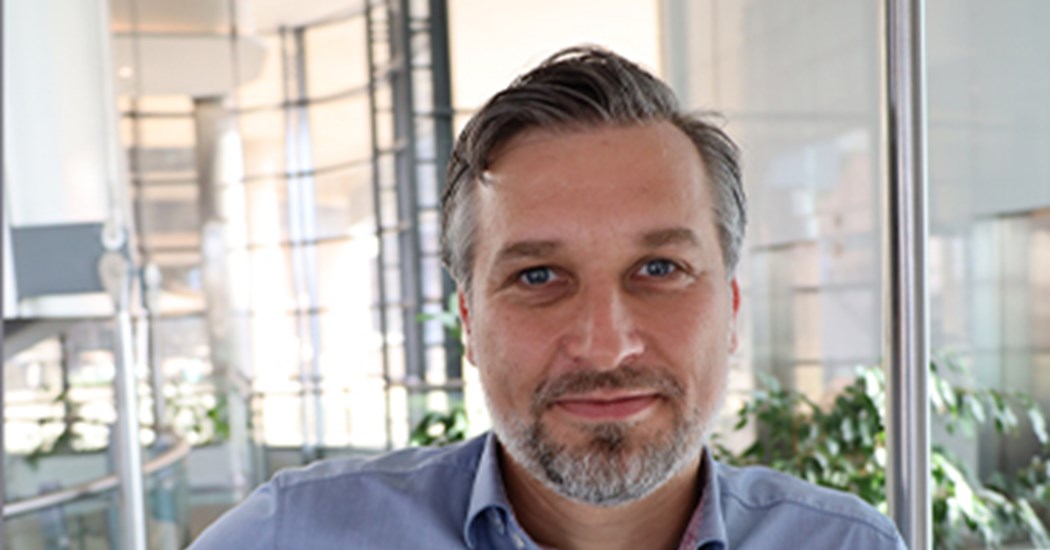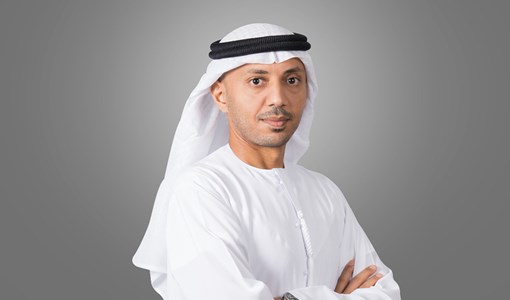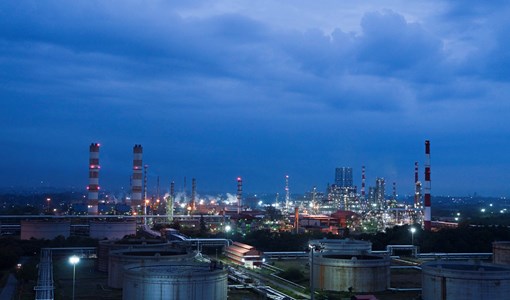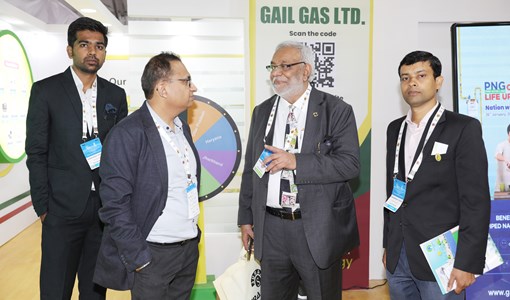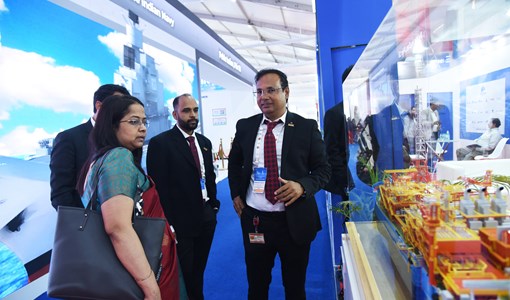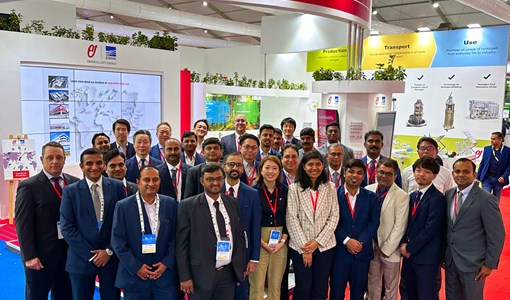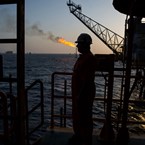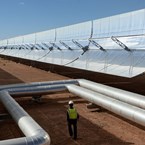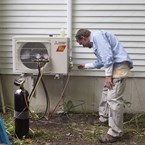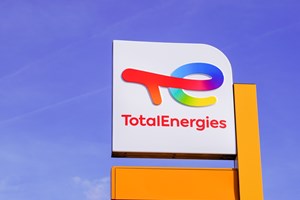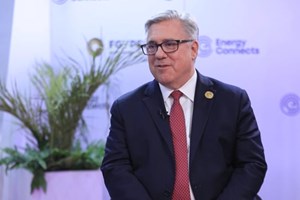Building the foundations for green hydrogen
Manuel Kuehn, Head of New Energy Business, Middle East and Africa, Siemens Energy spoke exclusively to Julian Walker about how it is helping to build the foundation to develop green hydrogen in the region
What is the significance of your MoU with Mubadala?
Green hydrogen provides the potential to decarbonise major parts of whole industries. Just switching electricity generation from fossil fuels to solar, wind and hydro will not help us decarbonise our whole energy system. Solar and wind power are highly fluctuating power sources. For some downstream sector applications, fluctuating input provides operational challenges. Therefore, we need to find ways to manage and optimise performance across the whole value chain. This is a challenging task that no player in the market will be able to solve alone. It’s the time now to forge powerful alliances.
Mubadala is a perfect partner for us since we share a common understanding on what is needed in the market, we are committed to developing our presence in the UAE and building high tech industry and knowledge-based jobs. Our agreement is putting the foundations in place to grow the green hydrogen industry and scale up the technology. The initial focus of activity will be in Abu Dhabi, but it is intended that this will be expanded to international markets over time
How will this partnerships help create a sustainable economy in the UAE?
Setting up meaningful projects requires us to bring together people and teams that did not work together before. We will need to adapt to new circumstances and dynamics.
Supporting our agreement with Mubadala, we also signed a MoU with Masdar, a subsidiary of Mubadala, as well as Abu Dhabi Department of Energy, Etihad Airways, Lufthansa Group, Khalifa University of Science and Technology and Marubeni Corporation, to establish a solar-powered green hydrogen demonstrator plant.
This agreement highlights again the value in collaboration with a variety of industrial partners – from the solar production, to the green hydrogen electrolysis, to the kerosene synthesis, to the end users.
This demonstrator plant will explore the development of green hydrogen, sustainable fuels and e-kerosene production for transport, aviation, and potentially also shipping. Masdar, Siemens and Marubeni will jointly develop the infrastructure to implement the demonstration project and each of these companies will contribute to securing the required funding.
The goal of this demonstrator is to deploy scalable technology, that allows us to build additional competences around plant integration, optimisation, safety operation etc.
Why is Abu Dhabi an attractive place to start this initiative?
There are several things that make Abu Dhabi an attractive place to develop a hydrogen economy. There is active government support and participation, which is demonstrated by the collaboration with Mubdala, Masdar and the Abu Dhabi Department of Energy. But Abu Dhabi also ticks several other important boxes, including having an abundance of cost-competitive renewable energy supply, as well as a skilled workforce and supportive academic institutions, such as our partner Khalifa University. Abu Dhabi also has established industrial infrastructure, and long-term relationships with important future offtake markets. Taken together, this really makes a formidable opportunity. There is also the ambition to make this venture successful. The UAE has always been an innovative and entrepreneurial place, which cannot be understated.
Why is green hydrogen creating so much buzz?
Green hydrogen has an extremely important role to play in the decarbonisation of energy systems. It is a very efficient energy carrier. With green hydrogen, we will be able to decarbonise sectors and applications in our lives that cannot be easily electrified, hence would not be accessible to renewable electricity. There are many applications that can benefit from green hydrogen, and as the industry develops and matures, there will be plenty more applications that emerge.
This can range from the transportation industry to industrial applications, to energy exports. In localised transport, for example cars and buses, green hydrogen and synthetic fuels derived from green hydrogen provide a lot of benefits, from quick and easy refuelling, to zero emissions. In longer range transport, hydrogen and synthetic fuels provide energy dense fuels that can energise ships and airplanes, where other technologies like batteries wouldn’t be suitable.
For the airline industry, for example, synthetic fuels derived from green hydrogen can be used instead of hydrocarbon alternatives. Synthetic fuels do not need aircraft to be redesigned. The main systems remain the same, even though these new fuels have to be carefully tested and certified. Non-fossil based synthetic fuels are the next logical step towards achieving significant decarbonisation in aviation.
Ultimately, the expansion of renewable energies alone is not enough to achieve the goal of decarbonised energy systems. It needs solutions that make it possible to store, transport and convert energy from solar and wind power. Green hydrogen can be the key to minimising CO2 emissions across sectors and to achieving climate neutrality in the long term.
How can green hydrogen become a game changer for the energy sector?
Demand for energy is growing and it is expected that by 2040, the global electricity demand will rise by around 50 percent, whilst around 800 million people still do not have access to energy. Renewable energy is the fastest growing segment of the energy sector. Meanwhile it is not only because we want to decarbonise the way we live and stop climate change – it is also in many cases already the most cost-effective way to energise society. But it doesn’t work everywhere and at any time.
By converting green electricity into hydrogen, we can store it, move it, and use it, when and where we need to. Once the energy is converted into H2 or a chemical, we can transport and store it for much longer than for example than in a battery.
The energy transition is a journey, and different countries are at different stages of this journey. Green hydrogen offers an effective route towards decarbonisation.
Which areas do you see green hydrogen playing a disruptive role?
The disruptiveness of green hydrogen may be a little over-estimated. I see it more as a complementary technology that will allow us to complete the puzzle of the energy transition. What I do expect however is that in the long run we will see a massive shift in the politics around energy. The renewable energy resources needed to produce hydrogen are much more diverse and distributed than the reserves of fossil resources. This can lead to a much more diverse and distributed landscape of energy producers and exporters. We will see new players that can start exporting green electricity to global markets. This could also lead to more value being generated close to the consumers. Maybe I am overly optimistic, but I can imagine that this will do good for our society.
What can Siemens Energy bring to the table in terms of green hydrogen?
We offer hydrogen electrolysers, which are critical for developing a sustainable green hydrogen economy. Our Silyzer portfolio is a dynamic PEM technology that is ideally suited to harvest volatile energy generated from wind and solar power. PEM electrolysis has a variety of benefits; it’s highly efficient at high power density, produces high product gas quality, requires low maintenance, and provides reliable operation, delivering no chemicals or impurities.
We already have gas turbines that can operate with up to 60 percent hydrogen, and we are developing most of our fleet to further integrate into a hydrogen-based energy system. Our target is to be able to burn 100 percent hydrogen in all our gas turbines by 2030.
This increased flexibility helps to make gas turbines a sustainable investment on the road to zero emissions since they can be run with natural gas now and with carbon-neutral hydrogen in the future.
In January we signed an agreement with Siemens Gamesa Renewable Energy to collaborate on the development of an innovative solution that fully integrates an electrolyser into an offshore wind turbine as a single synchronised system to directly produce green hydrogen. Siemens Gamesa will adapt its development of the world’s most powerful turbine, the SG14-222 DD offshore wind turbine to integrate an electrolysis system seamlessly into the turbine’s operations. Siemens Energy and SGRE target a total investment of approximately EUR 120 million over the next five years in the development of this innovative solution with a full-scale offshore demonstration expected by 2026. As one of the world’s leading energy technology company’s we are dedicated to innovation and we spend around EUR1 billion each year on research and development.
What are the main hurdles when it comes to working on green hydrogen technologies?
While the potential for green hydrogen is climbing the agenda for governments and energy companies around the world, proponents of the technology still face technical and regulatory challenges.
On one side, it’s about ramping up electrolyser production to allow for scale effects and bringing the cost down. On the other side we need to gain operational experience with the equipment in different environments, e.g. middle eastern climates.
Then we need to think about optimising the full value chain. While solar and wind power are highly fluctuating power sources, and even though the electrolysers can handle such fluctuation, some downstream sector applications don’t like fluctuating input. We need to find a way to manage the availability of hydrogen and optimise the performance across the whole value chain.
We also have to look into safety. The use of hydrogen is not new to the industry and the procedures and competencies are available. However, as we proceed with what we call sector coupling - interconnecting and integrating energy consuming sectors - these applications are being used in new areas. This means we need to train and enable more people from different backgrounds on how to install and maintain the systems safely. That’s why it is important to have a plan for capacity building from the beginning.
But these challenges can be overcome, particularly in collaboration with the right partners.
KEEPING THE ENERGY INDUSTRY CONNECTED
Subscribe to our newsletter and get the best of Energy Connects directly to your inbox each week.
By subscribing, you agree to the processing of your personal data by dmg events as described in the Privacy Policy.

Energy Workforce helps bridge the gender gap in the industry
Mar 08, 2024
EGYPES Climatech champion on a mission to combat climate change
Mar 04, 2024
Fertiglobe’s sustainability journey
Feb 29, 2024
P&O Maritime Logistics pushing for greater decarbonisation
Feb 27, 2024
Neway sees strong growth in Africa
Feb 27, 2024
India’s energy sector presents lucrative opportunities for global companies
Jan 31, 2024
Oil India charts the course to ambitious energy growth
Jan 25, 2024
Maritime sector is stepping up to the challenges of decarbonisation
Jan 08, 2024
COP28: turning transition challenges into clean energy opportunities
Dec 08, 2023
Why 2030 is a pivotal year in the race to net zero
Oct 26, 2023Partner content

Ebara Elliott Energy offers a range of products for a sustainable energy economy

Essar outlines how its CBM contribution is bolstering for India’s energy landscape

Positioning petrochemicals market in the emerging circular economy

Navigating markets and creating significant regional opportunities with Spectrum


